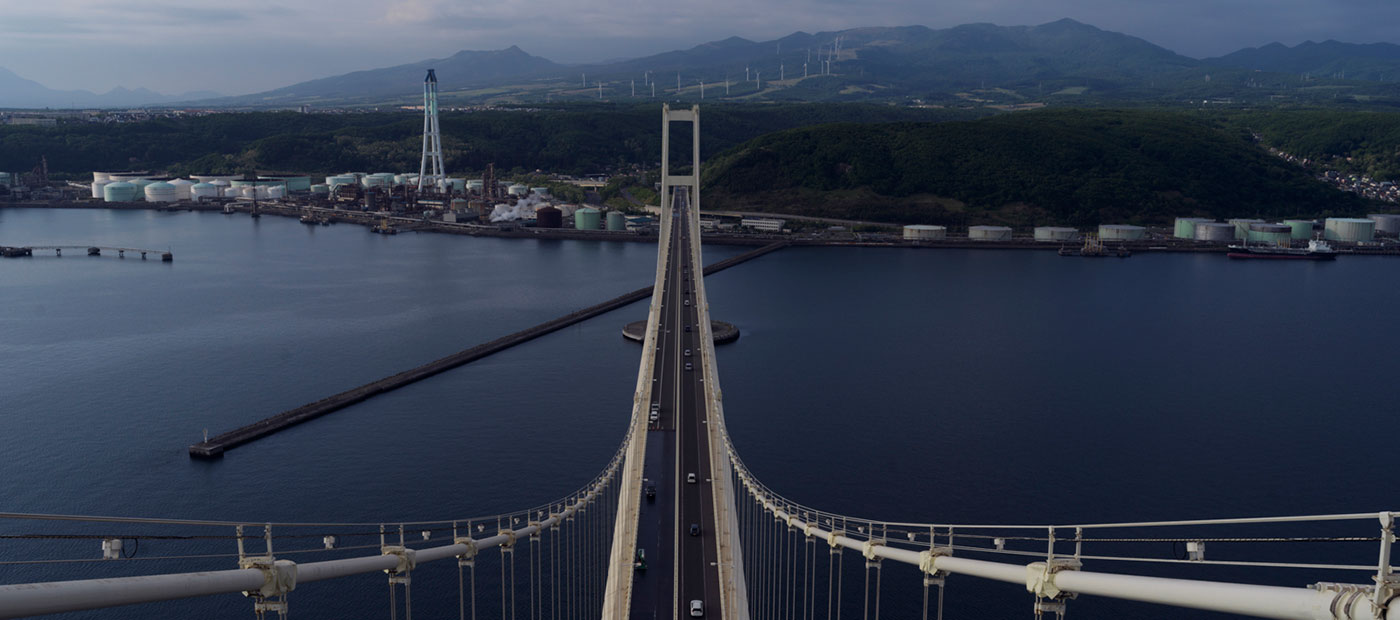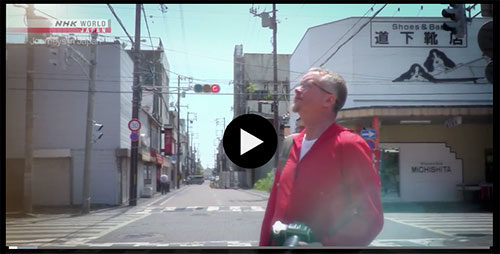I’ve traveled to Hokkaido many times but my trip there in July of 2019, with NHK World’s ‘Journeys in Japan’ programme, was my first time in Muroran.
I spent a wonderful week there filming with my director and crew. It’s a place I’d love to return to as soon as I get the chance.
Since I was a small child, I’ve always had a keen interest in history and more particularly how it has influenced and shaped contemporary life. Often, in Japan, there seems to be less visible history: buildings get renewed often, natural disasters now and again wipe the landscape clean and WW2, in various parts of the country, changed the environment of major cities forever.
Muroran’s history seemed closer to the surface, easier to feel. The city’s name is derived from Ainu words, the visit of British sailors in the 1790s is commemorated with statues and artefacts and the city’s history as a steel town is ever-present in the landscape. It’s easy to feel connected to the past in Muroran but, as I spent more time there, I felt not only the depth of history but its weight too.
From the statue commemorating the visit of HMS Providence in 1796, to the red-brick factory building created with the help and investment of British industrial partners in the early 1900s, to the rugged coast and cliffs surrounding the city. Muroran for me conjured constant reminders of my home nation, the United Kingdom.
I’ve lived in Japan full-time for over 13 years and spent another eight before that coming and going between the UK and Japan. I carry my country inside me but Muroran, oddly (being so far away from Britain) offered me a chance to feel once again in the comfortable embrace of British things: bricks, mortar, steel, cliffs, sea, ships. My week was spent making new memories in an area steeped with history and memories of the land I personally left behind in 2007.
Muroran is a city very aware and proud of its history but at the same time somewhere at the mercy of its past: tied very much to one main industry – iron and steel – and the cycle of prosperity and downturn that is typical of heavy industry in many other parts of the world. Muroran and its people are a product of of that industry. The landscape is irrefutably shaped by it. Yet, with a population now less than half what it was at the height of its industrial boom, Muroran faces a challenging future.
Pride alone doesn’t pay bills or secure the future. But along with the innovation, enthusiasm, energy, community, strength of spirit and resolve of the the locals – old and young – met during my week in Muroran, I feel the city is more than capable of rising to this challenge.
It won’t be just the wonderful landscape, abundance of rich social & industrial history, delicious food and endless photo opportunities that will take me back to Muroran for more visits. It will, more than anything, be the people. Their history, their spirit. Their memories and recollections from the past, their hopes, dreams and plans for the future. Their warmth. Their smiles.
I shot all the photos with a Hasselblad X1D-50c, 21mm, 45mm, 90mm and 135mm lenses. I also took the teleconverter for the 135mm, which makes it 270mm or about 220mm in full-frame DSLR terms.
You can read my ‘Hasselblad Diary’ about the trip here at Hasselblad’s website.
Gallery of shots from Muroran, all shot using the ‘XPan crop’ in the X1D-50c, which gives a 2.75:1 aspect ration, same as the old XPan film camera. There’ll be more coming out either later this year or next, in a photobook.





















